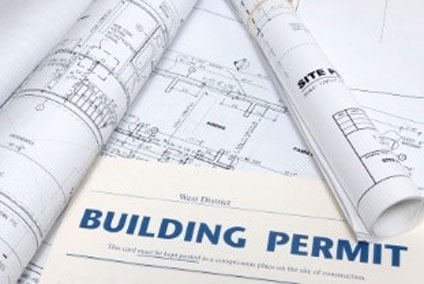Is one step more important than the other? What is the difference between the Design/Build (DB) and Design/Bid/Build (DBB) Processes?
By Evan Williams
The process of conceptualizing, designing, and constructing a project is a complex and sometimes confusing series of interconnected tasks that rely on one another to result in a complete facility. As an owner, you may or may not have familiarity with these processes, but better understanding them can help you know what to expect to avoid surprises, as well as having a better ability to plan ahead and positively impact the process.
One critical phase of the project development is the final stages of the pre-construction process, which involves the bidding and permitting of the project. There are several important things to know as an owner which represent areas of critical performance (that you either have responsibility for, or can help with) that are important to ensuring that the project moves forward smoothly.
Project Delivery

This Photo by Unknown Author is licensed under CC BY-SA-NC.
The type of construction project has a bearing on how the project will be structured. In a Design/Build project, the construction partner develops the bid packages. They will leverage their experience in construction and work in coordination with the design team assembling the bid packages, addressing any questions from the bidders, and presenting the bids tabulated for the owner to review. In Design/Bid/Build, the designer in charge prepares the bid package, and distributes it to general contractors. As an owner, you need to know the critical difference between DB and DBB is that in a DB project, the general contractor is acting as a part of the project development team from day one, and in a DBB project, the general contractor is brought in after the design has been completed. This is important because in a DB project, the feedback from the general contractor has been a part of the project development to help ensure that it aligns with project budget, schedule and performance objectives, where in a DBB project delivery, this is the first time the team that that will actually be building the project will lay eyes on the plans. As the owner, you should expect significantly more questions during the bidding phase of the DBB project, as the general contractors try to better understand the project and familiarize themselves with your needs. In a DB project, they are already engaged, so questions should only be from subs and should be minimal.
Bidding
If the project is a traditional DBB, the architect or responsible design professional will work with you to develop the bid package, including drawings, scope letters, instructions to bidders and other similar information. As the owner, you need to know that these items are critical to execution of the project. If the drawings are not complete or if the bid scopes do not completely cover the work required for the project, you will be on the hook for the cost(s) to add scope or engage other contractors to cover that scope gap. When the prices come back from the general contractors, if their costs are significantly higher than the estimated costs from the design engineer, then the project drawings are typically re-worked to better align with the project budget. It is important to know that this can represent a time-consuming and often expensive process to get the project drawings to represent a final design that is buildable for the projected budget.

This Photo by Unknown Author is licensed under CC BY-ND.
In a DB project, the general contractor is involved in the project development from day one and has input into the conceptualizing of the project scope and design development. They have the ability (and are encouraged) to offer feedback and recommendations on approaches to keep the project design in line with the project budget expectations. As an owner, you need to know if after bidding the pricing is over 5 percent higher than the originally stated project budget, you should not be responsible for re-design fees (assuming escalated costs are not due to documented material escalation, too much time passing, use of preferred contractors and similar factors).
Utilities

This Photo by Unknown Author is licensed under CC BY-ND.
The designers for the project may have started the utility service application work during the design development phase. If not, this should start during the bidding/permitting phase. You will often need to provide your existing customer information for the electric utility. In addition, you may need to involve your internal IT staff on the data service to make sure it aligns with your preferred providers and meets your needs. Another important consideration on the utilities is to ensure the service size meets your needs now, as well as into the future. If it is likely that you will need additional water service for a building expansion, make sure the mains are sized to provide adequate sprinkler coverage. On the electric service, while the utility may not allow you to install a service significantly larger than you need on day one, you can install switchgear and secondary conductors that can accommodate an up-sized transformer in the future if needed.
Permitting

This Photo by Unknown Author is licensed under CC BY-SA.
Permitting needs vary greatly across the country. As the owner you need to know that permitting is not a simple process, and the overlapping jurisdictions for different permits often presents a time-consuming and often confusing process. Ideally, your DBB or DB team will start the permitting process during the design development. You should know that many permitting agencies will require the owner to submit or sign all the applications. Occasionally, they will allow you to designate an ‘owners agent’, which is a document where you empower your project partners to act on your behalf with the permitting agencies. Once the required permits are identified for your project, they should be added to the project schedule. Be aware that the projected timelines given by the permitting agencies are often for one round of reviews. Depending on the jurisdiction and how busy they are, there could be several rounds of reviews, which can multiply this task duration. Plan on at least two rounds of permitting reviews when adding the permitting to the project schedule. As an owner, you need to know that the property needs to be in full compliance before most jurisdictions will issue permits, so any outstanding taxes and utility bills or assessments need to be paid prior to starting permitting.
Knowns and Unknowns
When you are entering the bidding/permitting phase, the goal should be to set the pieces in place for the project to start construction quickly and in line with your budget. It is important to know that there will be surprises. As an informed project owner, keeping these surprises to a minimum and understanding their causes is important. To that end, you can group them into three categories:
1. Known Knowns—These are items that you know you know, whether they be which permits you need, or the timeline of the local electric utility to install service.
2. Known Unknowns—This is an important category of items the project team does not know, but is aware of. This can include the team knowing it needs to install a septic system for the project, but is not sure of the exact design, as the sub would be designing it, or if the utility connections at the road are not located. As the owner, you should push your project partners to create a list of these items to track how they are being resolved.
3. Unknown Unknowns—These are actual surprises that no one anticipated. For example, your jurisdiction may have a development impact fee that was not previously disclosed. This can represent a significant cost that does not directly provide value to the project but is not avoidable. The goal should be to work to identify areas that are not well-defined to keep this category as small as possible.
Conclusions
The most important thing you should know as an owner while entering the bidding and permitting stage is that you are comfortable with your project partners. You will be relying on them to deliver a quality project and by coordinating and planning properly, this process can be smooth and effective. It will not be without surprises, but know that proper planning and a good team can make it better. | WA
Evan Williams is a Design Project Manager at Cambridge Companies (Griffith, IN), a design-build firm working with the waste industry for more than 20 years. During this time, more than 100 solid waste design-build projects have been completed, including new build, repairs, upgrades and/or modifications at transfer stations, recycling centers/MRFs, hauling companies, landfill facilities, office buildings and more.
Cambridge continually monitors the industry to determine any new needs, changes or improvements that will benefit their clients and improve their design-build solutions. Evan can be reached at (219) 972-1155, via e-mail at [email protected] or visit www.CambridgeCoInc.com.
